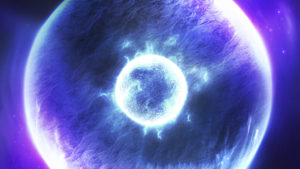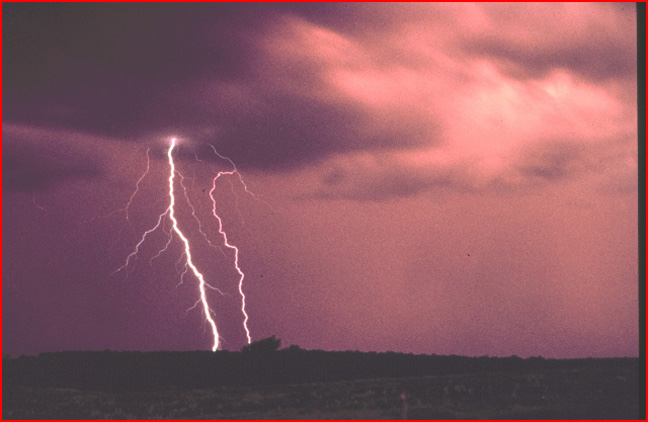


|
Weather: Fair, Foul or Electric? Because the Earth is a small charged body moving in a large cell of plasma, explanations of all physical phenomena in, on, and near the Earth must take the electrical behavior of plasma into account. Earth's atmosphere is an insulating medium separating the charge on the surface from the charge in the surrounding space plasma. A complex of "double layers" distributes the potential difference between the surface and space much like a series of capacitors. We detect the electrical field of the bottommost layer in the fair weather surface field of around 100 volts per meter. This field beneath a thunderstorm may be 100 times stronger as the atmospheric dielectric is "shorted out" over many vertical kilometers by thunderclouds. As in a capacitor, when the insulating medium breaks down a discharge occurs between the electrodes. We can readily understand that lightning in a thunderstorm would be such a discharge. However there are other forms of discharge besides the arc mode of lightning--diffuse glow discharges, such as the sprites that occur above thunderstorms, and, especially, "dark" discharges. Although the latter may carry significant current, we are usually unaware of them because we can't see or otherwise sense them. But they may have visible secondary effects. Close observation of laboratory arc discharges reveals that an electrical "wind" surrounds and often precedes the arc. The developing discharge sweeps the surrounding air along with the charge carriers of the current. This wind appears as inflows and updrafts as well as outflows and downdrafts. It can lift dust particles and erode surfaces. By analogy, we must then question the accepted explanation of thunderstorms as being caused solely by convection of hot air: The storms may instead be the visible secondary effects of an invisible dielectric breakdown in the Earth's atmosphere. The up- and down-drafts, the in- and out-flows, would be atmospheric responses to "dark discharge" electrical currents more than to temperature differences. Furthermore, the suspension of particles--charged dust and polar molecules (water)--would be largely a result of electrostatic forces sweeping both particles and air along in the electrical field of the discharge. This would explain the spherical shape of hailstones, for example, which do not show the distortion that would be expected if they were formed by being blown upward by strong wind friction forces. This leads to the more general idea that all weather may be caused, or at least influenced, by the electrical interactions between Earth and the surrounding plasma. Because this larger possibility has never been considered, critical tests have not been devised that would distinguish between the competing explanations. But there are tests that cast doubt on the prevailing theory. Convection is well understood. The theory of gas behavior in a convecting system is developed with great exactitude. But the weather forecasts derived from convection theory are more than mere applications of theory: They are also tests of that theory, and a wrong forecast is a falsification of the theory. The significant fraction of erroneous forecasts by weathermen is an indication that the theory is missing something. The Electric Universe suggests that what's missing is a consideration of the electrical properties of plasma. |
||
|
Copyright 2004: thunderbolts.info |
||